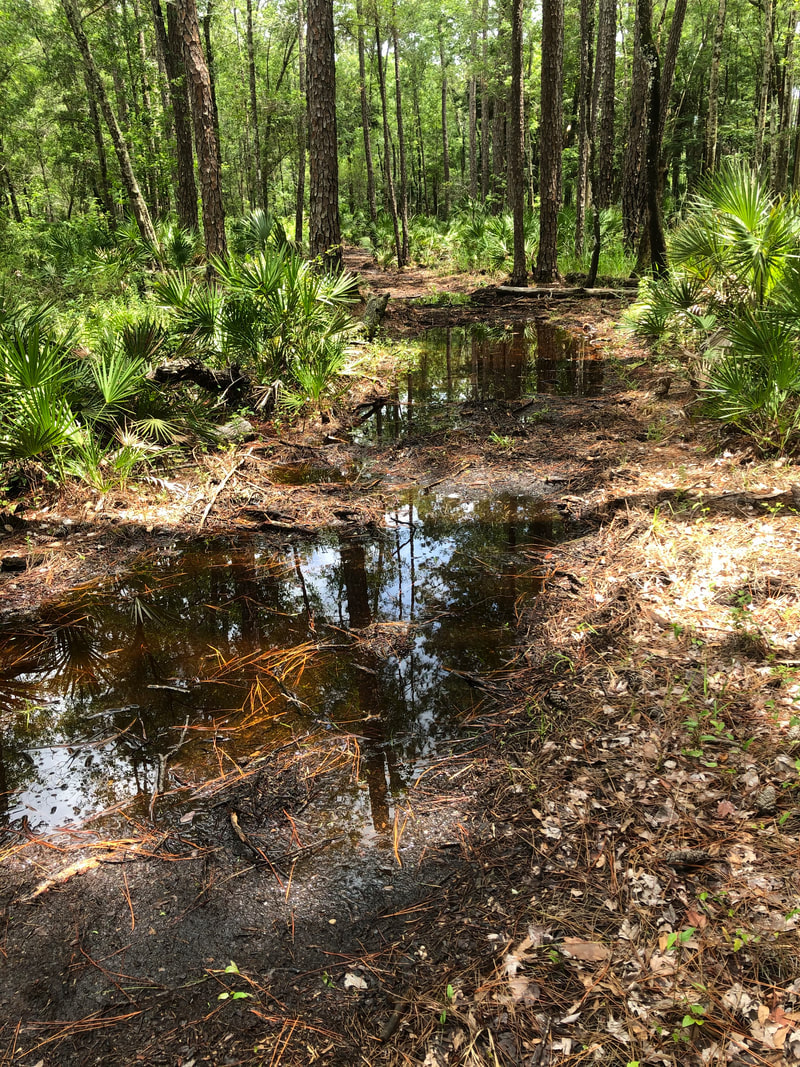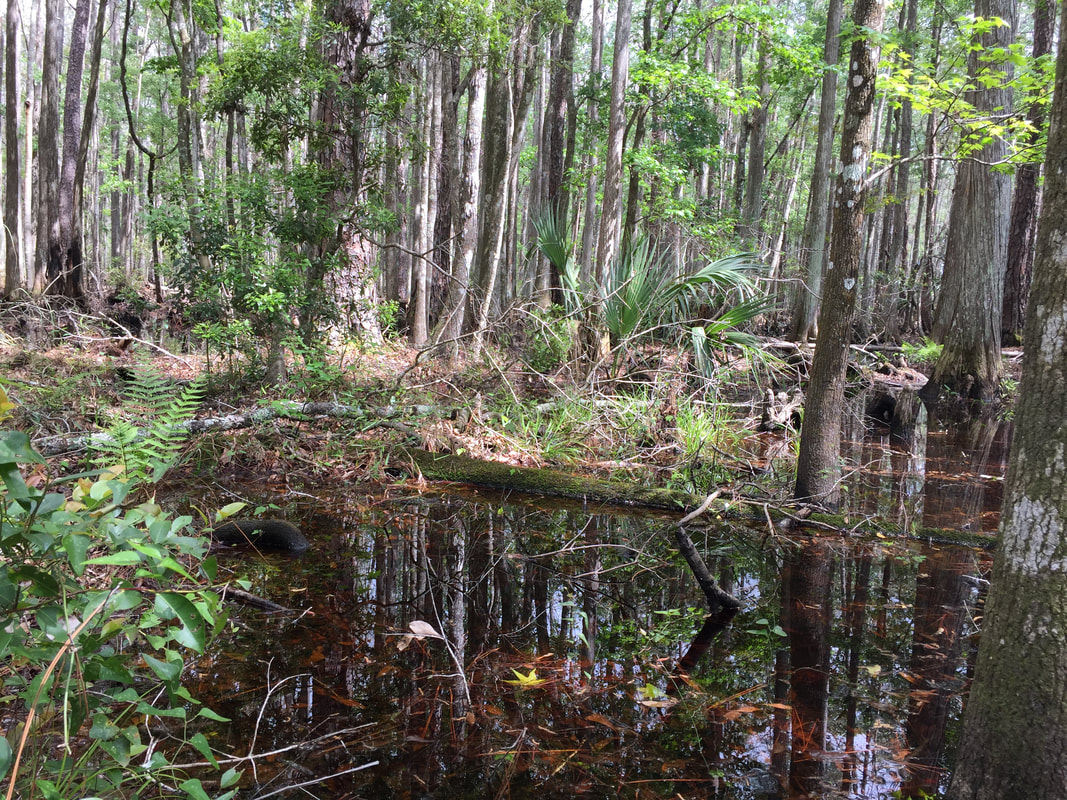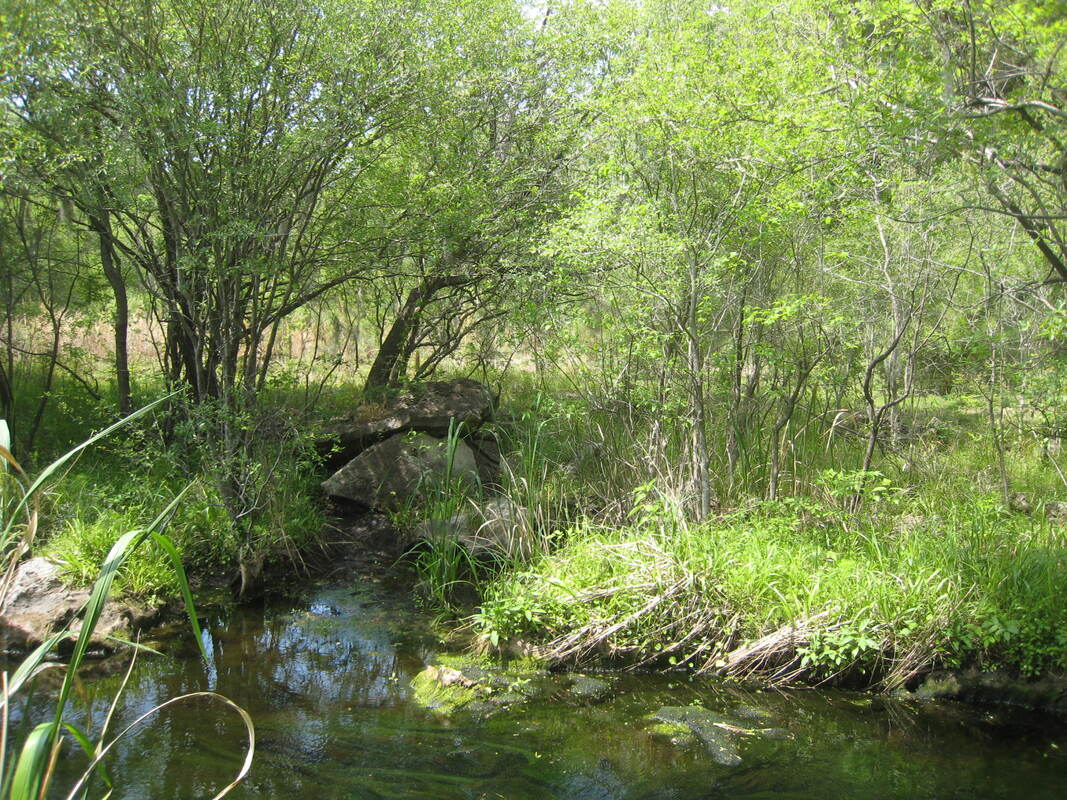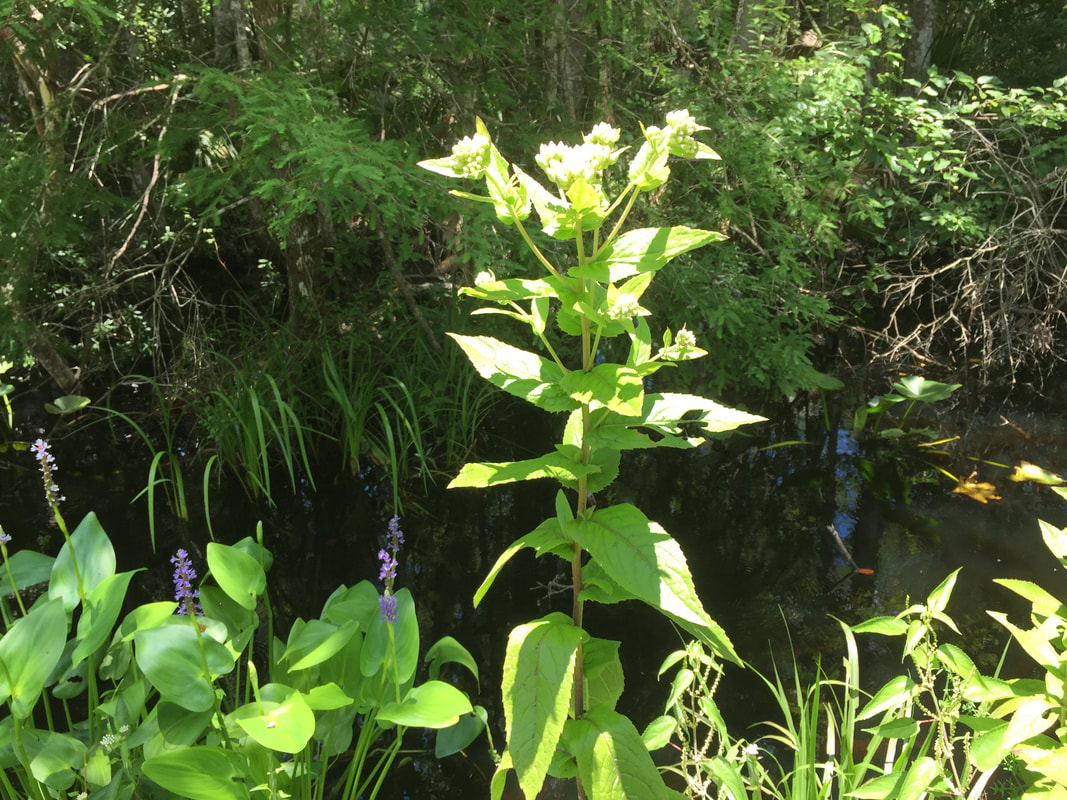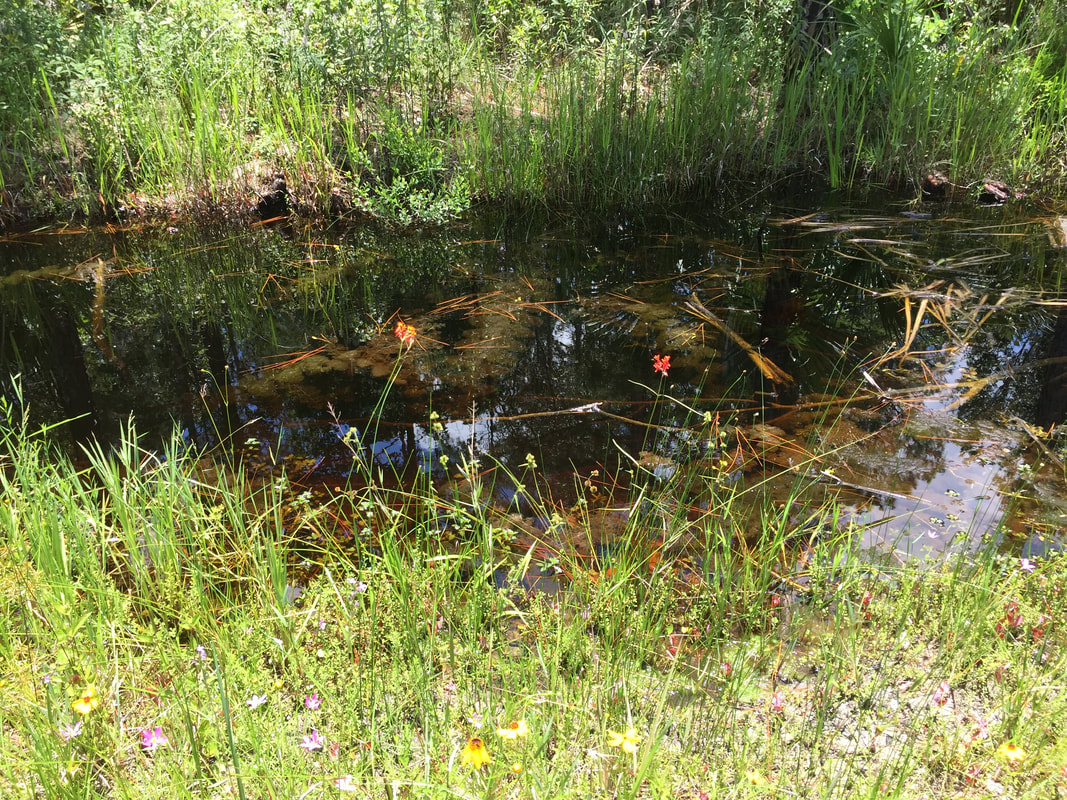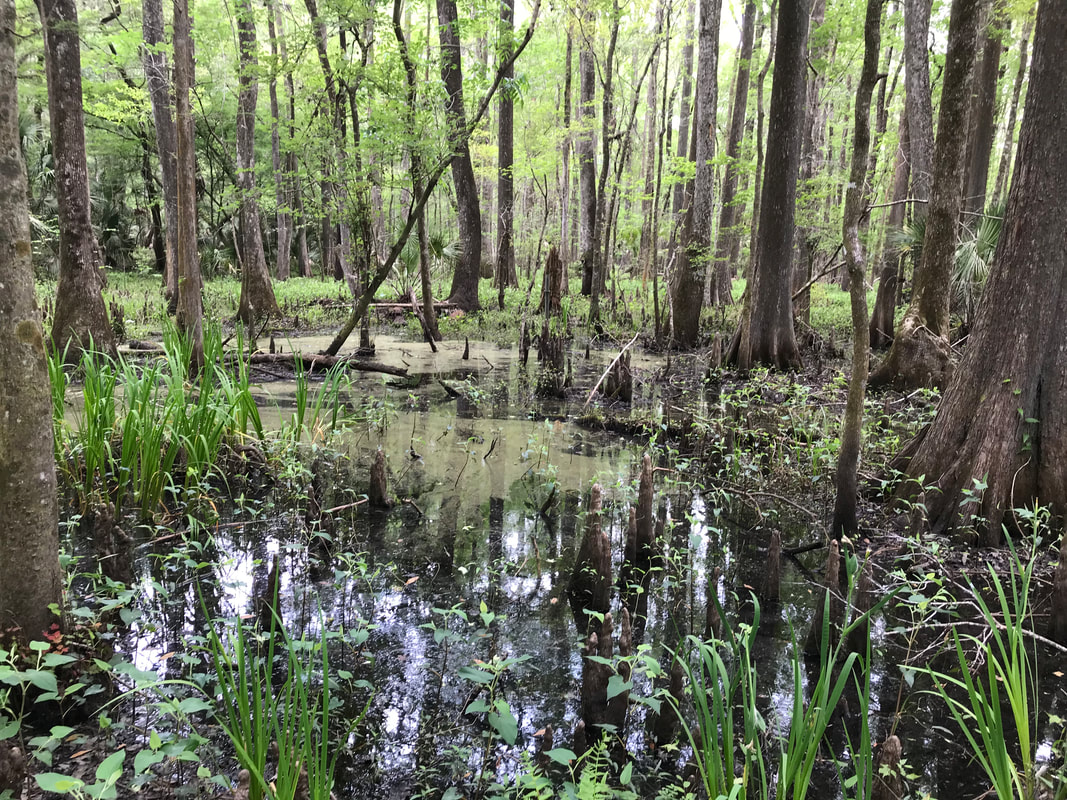Long-Term Project to Restore the Natural Hydrology
of the Lower Suwannee National Wildlife Refuge
Refuge Manager Andrew Gude and his staff have been engaged in a multi-year effort to plan the possible restoration of the natural hydrology across the Lower Suwannee Refuge into the Gulf.
Several years ago, as a result of the Gulf oil spills, grants for high impact projects to restore land and water became available in our region. With planning already well in process, in 2017 Andrew reported that the Refuge was joining with several potential partner organizations to submit proposals for funding from the oil spill mitigation monies for a Hydrology Restoration Project on the Refuge.
|
Why is Hydrology Restoration needed?
The 200 miles of Refuge roads and trails are former logging roads constructed to access timber stands. Natural hydrologic flow and connections to the Suwannee River Sound, estuary, and Big Bend region of the Gulf of Mexico is negatively impacted by this old road network. The roads function the same way levees or dikes would. They impound the water and in many instances redirect it into culverts, disrupting natural sheet flow. This blockage of surface flow means that much of the water does not make it to the estuary. It is detained long enough to evaporate inland altering the estuarine balance and the ecology and productivity of the nearshore waters. This affects freshwater and marine fisheries that are important for recreation and commerce. |
What did the Refuge propose to do?
The proposals addressed the most significant road features, the Dixie Mainline and the Nature Drive. They sought to restore hydrology on the Refuge through:
The proposals addressed the most significant road features, the Dixie Mainline and the Nature Drive. They sought to restore hydrology on the Refuge through:
- The replacement of undersized and dilapidated culverts.
- The installation of additional culverts, low water crossings, ditch plugs, and bridges.
- The removal or breaching of underutilized roads and trails and subsequent filling of roadside ditches.
|
Was the Proposed Project Approved?
The Hydrology Restoration Project received approval and initial funding in 2018. Andrew reported that the next step was to obtain detailed engineering studies of the specific areas where changes should be made. The Refuge decided to focus first on the public driving roads, the Dixie Mainline, its spurs, and the Nature Drive and its spurs. The secondary roads will be addressed later, but remedying the public driving roads is a first priority and would use all the funding available in the initial grant. The Refuge worked with the Suwannee River Water Management District (SRWMD), which has abundant expertise in water studies. SRWMD issued a Request for Quotations to identify an appropriate consulting firm for an Engineering and Design Study. The purpose of the study was to lay out various options to achieve our restoration goals. |
Again . . . Why is the project needed?
The project is important because it will return the natural hydrology and movement of water through the Refuge to the Gulf of Mexico. It will improve the health of the estuary by restoring freshwater to it. Moreover, it will help sustain the economic viability of recreational and commercial fishing, ecologically important oyster reefs, federally-protected species, and the significant shellfish aquaculture industry in the region.
The project is important because it will return the natural hydrology and movement of water through the Refuge to the Gulf of Mexico. It will improve the health of the estuary by restoring freshwater to it. Moreover, it will help sustain the economic viability of recreational and commercial fishing, ecologically important oyster reefs, federally-protected species, and the significant shellfish aquaculture industry in the region.
The photos show various ditches next to roads. The roads form barriers, keeping the fresh water from flowing naturally across the land and into the Gulf and River.
Are funds available from other sources than the Gulf Oil Spill monies?
In 2021, the Florida Fish and Wildlife Commission's Aquatic Habitat Restoration and Enhancement Program provided the Refuge with a purchase of 1,000 tons of lime rock and 600 tons of gravel for the hydrologic restoration project’s low water crossing improvements.
This part of the project is restoring the overland sheet flow across the grass behind the gates on Refuge roads that are not open for cars, just for hiking, biking, and land management activities. Select areas of the grassy secondary road system that retain water are being cut down to grade. The rock is then being placed in the new road bed so refuge management and prescribed fire traffic can cross without sinking and rutting the road, and so water can flow naturally as it did before the road was present.
How did the Engineering and Design Study progress?
Staff members from the engineering firm Wood PLC continued with surveying of Refuge roads for several years and collated their data with Suwannee River Water Management District's rainfall data to determine the options available to improve and restore the natural sheet flow across the Refuge lands. By the end of 2021, the Refuge had results of the study and was able to move to the next phase of the project.
In 2021, the Florida Fish and Wildlife Commission's Aquatic Habitat Restoration and Enhancement Program provided the Refuge with a purchase of 1,000 tons of lime rock and 600 tons of gravel for the hydrologic restoration project’s low water crossing improvements.
This part of the project is restoring the overland sheet flow across the grass behind the gates on Refuge roads that are not open for cars, just for hiking, biking, and land management activities. Select areas of the grassy secondary road system that retain water are being cut down to grade. The rock is then being placed in the new road bed so refuge management and prescribed fire traffic can cross without sinking and rutting the road, and so water can flow naturally as it did before the road was present.
How did the Engineering and Design Study progress?
Staff members from the engineering firm Wood PLC continued with surveying of Refuge roads for several years and collated their data with Suwannee River Water Management District's rainfall data to determine the options available to improve and restore the natural sheet flow across the Refuge lands. By the end of 2021, the Refuge had results of the study and was able to move to the next phase of the project.
|
What is happening now? The Refuge has been approved to move to the implementation phases of this massive restoration project. It has received approval, in principle, for about $6 million and is now applying for the final funding needed for specific components of the implementation, which will take place on both sides of the Suwannee River. All federal guidelines need to be followed for contracting. The interaction of land and water in drought and in flooding is complex. Exacting attention needs to be paid to what the Engineering and Design Study found and, frankly, to the knowledge the Refuge staff have from the years of on-the-ground work and observation. |
It is a huge undertaking with years of work still to come. However, it has been a hundred years since the water flowed over this land without man-made barriers. Going back is good and, when we get there . . . the future will be better for the land, the river, and the Suwannee Sound. This is why we have national wildlife refuges, to make the future better for nature and all of us who need it to thrive.

Friends of the Lower Suwannee & Cedar Keys National Wildlife Refuges
P. O. Box 532 Cedar Key, FL 32625 [email protected] We are a 501(c)(3) nonprofit organization. |
|
